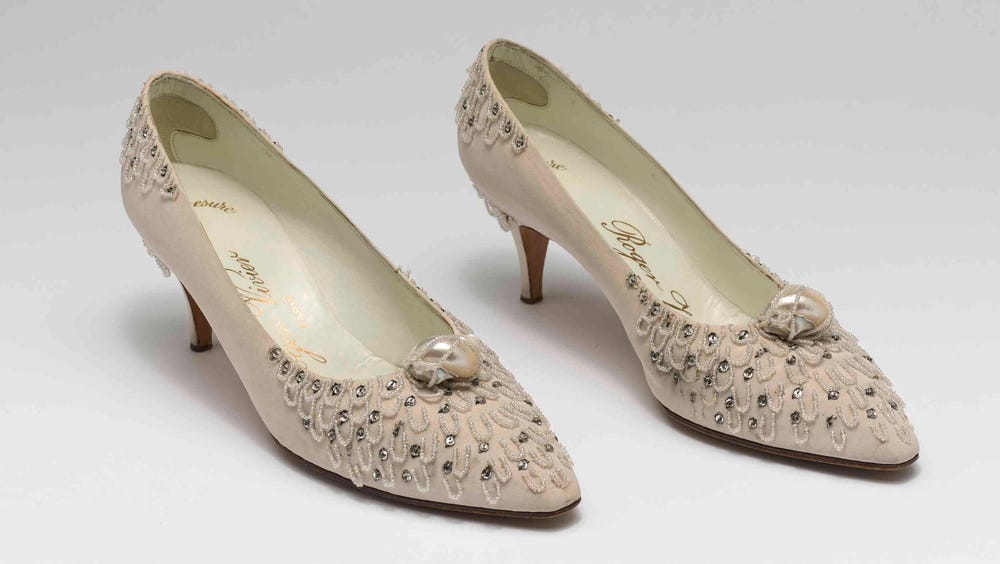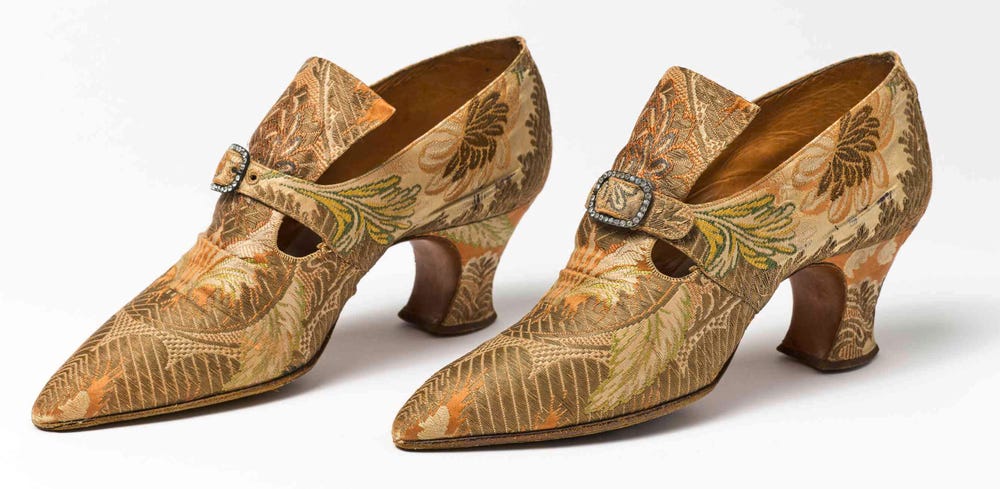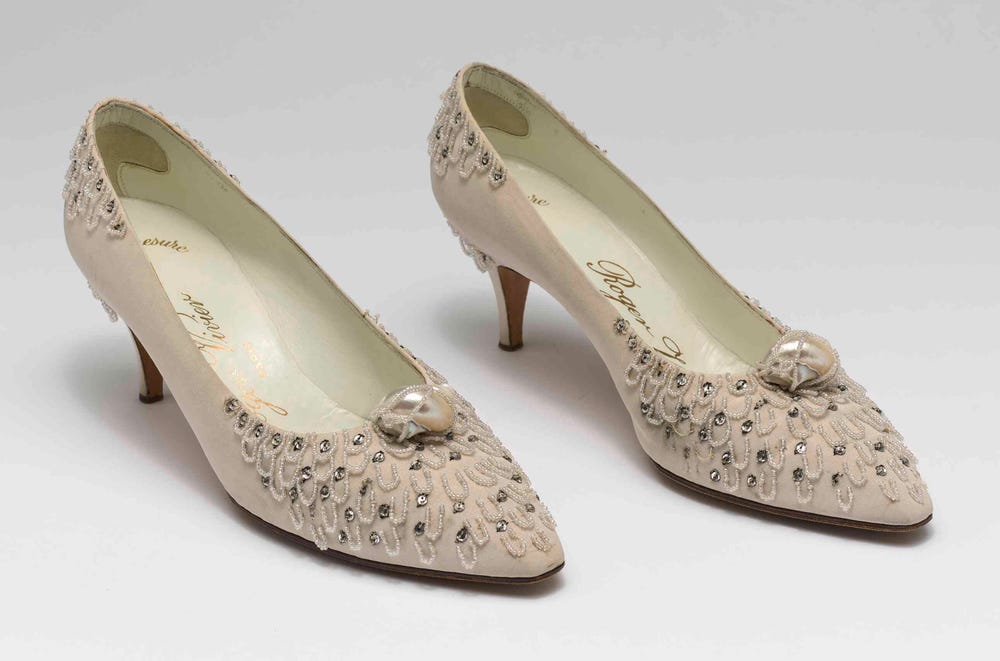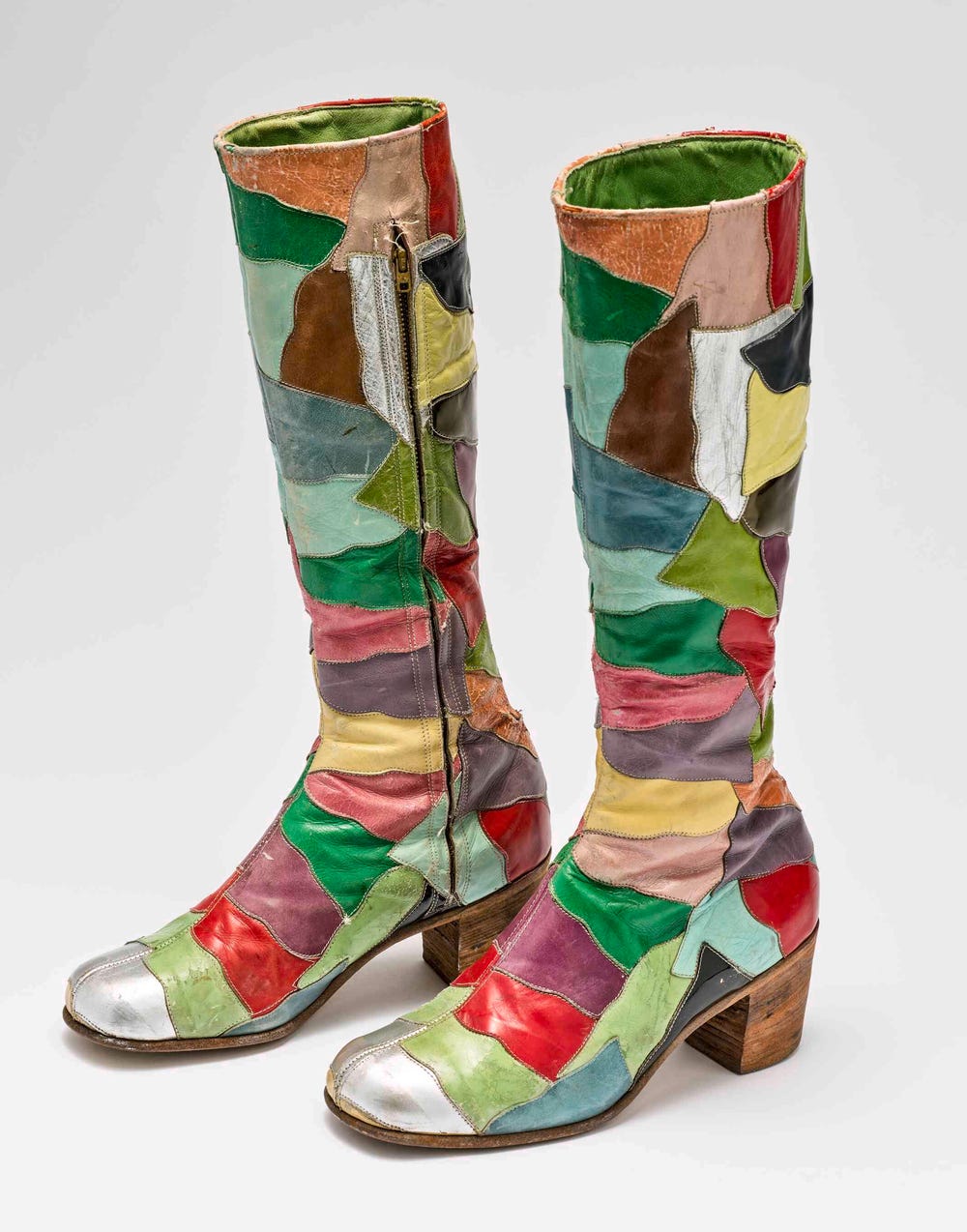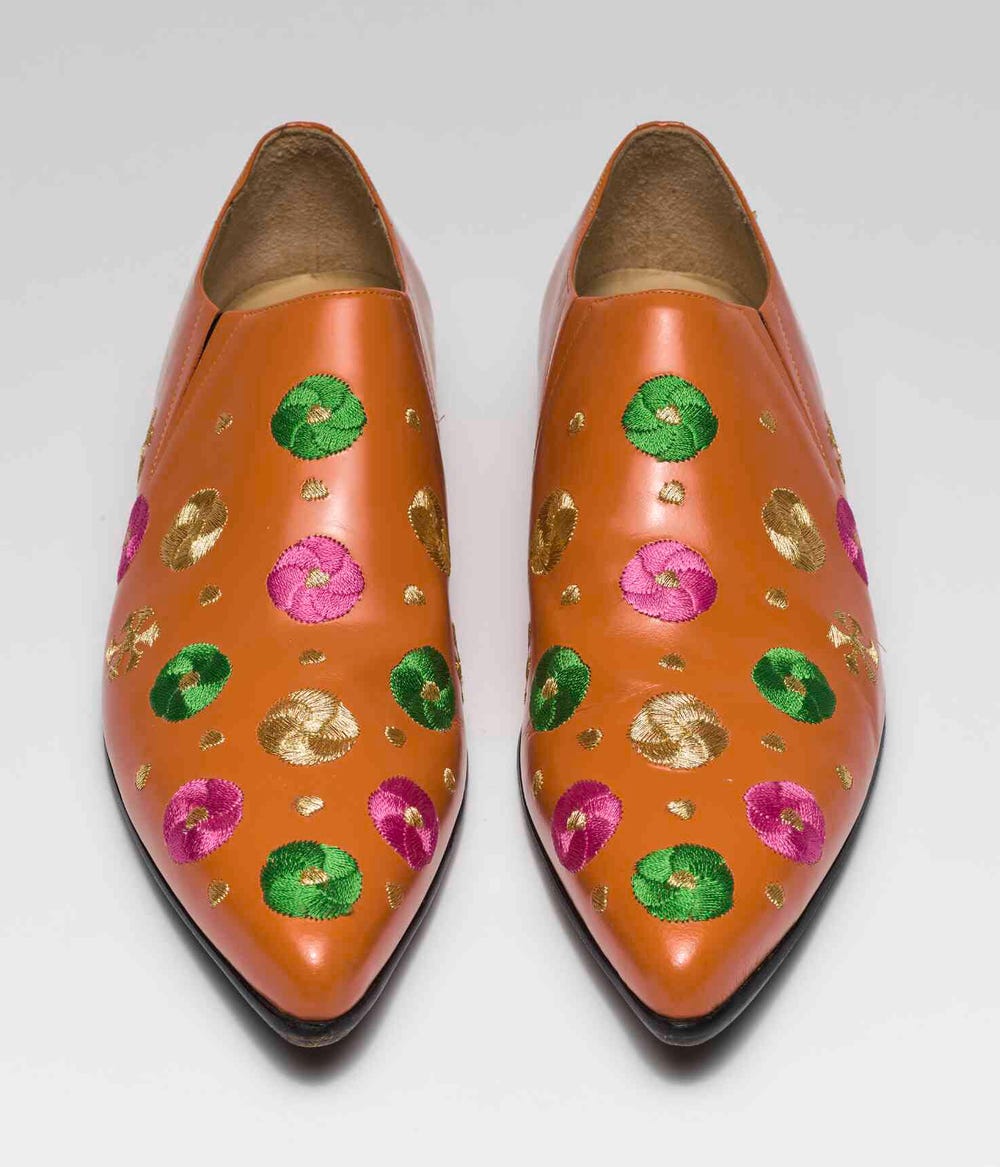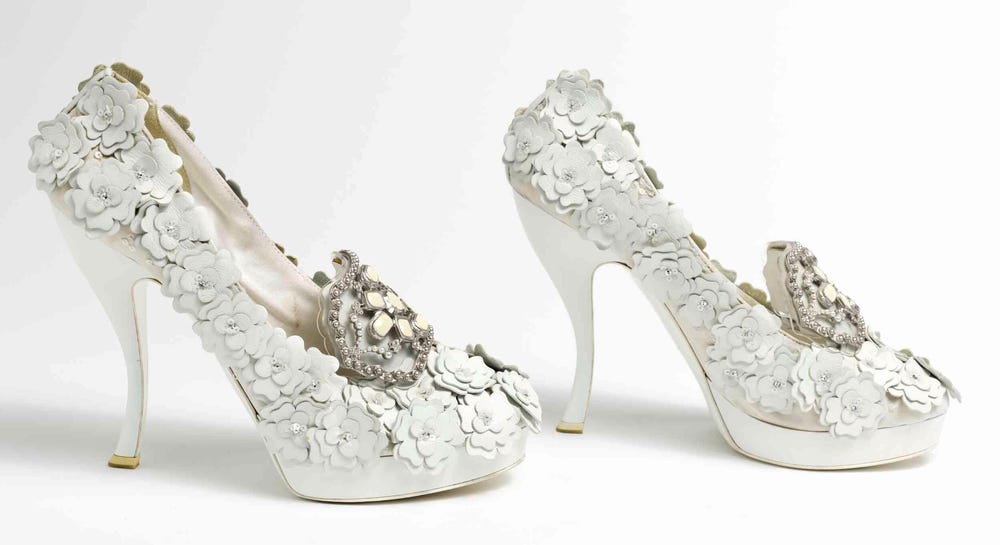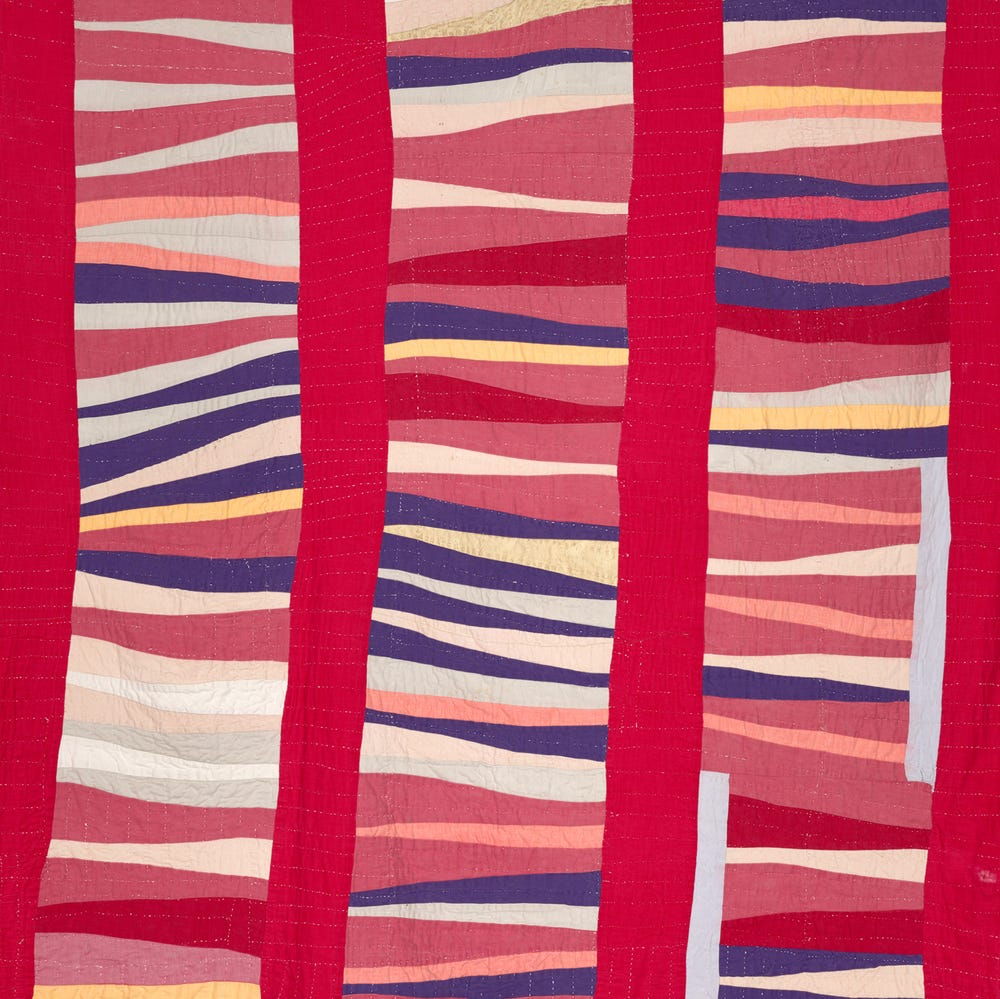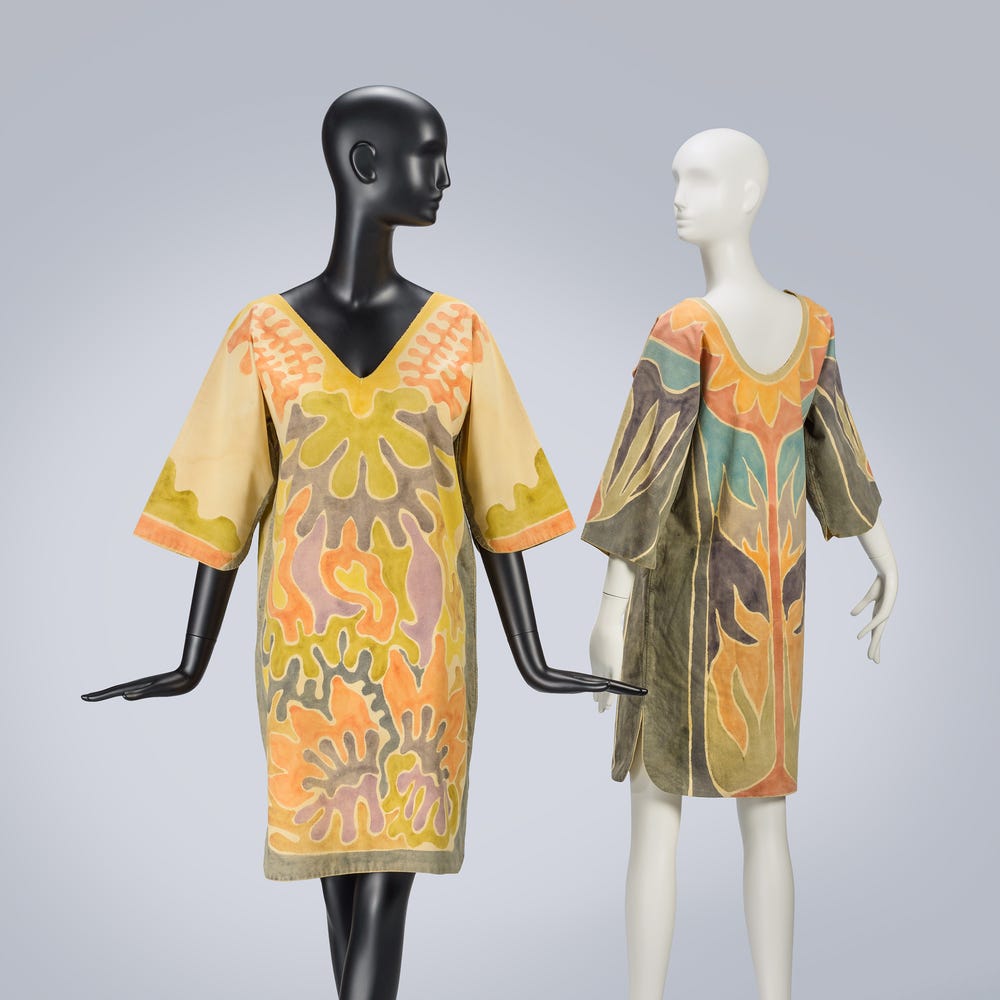5 Pairs of Shoes That Tell San Francisco’s Fashion Story
By Talia Spielholz, curatorial projects coordinator, costume and textile arts
December 21, 2023
Roger Vivier (French, 1907–1998), Shoes, 1964–1965. Worn by Jeanne Magnin (American, 1896–1986). Silk gros de Tours with glass rhinestone and silver-wrapped thread embroidery; and glass seed bead embroidery, shell. Bequest of Jeanne Magnin, 1987.25.25a–b
In San Francisco, a walking city that embraces diverse communities and styles, the “right” pair of shoes can not only complete an outfit but also express personal identity in ways that clothing sometimes cannot. Fashioning San Francisco: A Century of Style looks at the social and urban development of the city through our collection of 20th- and 21st-century fashion and haute couture.
Here are five pairs of shoes from the exhibition that help tell the story of fashion in San Francisco:
1. Yantorny buckle shoes
Pietro Yantorny (Italian, 1874–1936), Shoes, 1918–1921. Worn by Ethel Mary Crocker de Limur (American, 1891–1964) or Helen Crocker Russell (American, 1896–1966). Silk and metal-wrapped thread droguets liserés; and copper metal alloy buckle with glass rhinestones. Gift of Mr. Charles H. Russell, 66.44.1a–b
Known for his perfectionism, Italian-born, French-based designer Pietro Yantorny said of his designs: “a shoe should be, when it leaves my atelier, a work of art.” Yantorny created custom footwear for exclusive clientele in the late 19th and early 20th centuries. With a private atelier in Paris, he elevated shoe design and making into an art form, and brought new and international attention to footwear. Both his classic daytime and more lavish evening styles were designed to mold to their wearer’s feet to ensure the perfect fit and utmost comfort, like couture garments. This pair’s fashionable form is enhanced by the use of droguets liserés (a woven silk textile first used in the 18th century), in this case, with silk and metal-wrapped threads.
2. Vivier kitten heels
Roger Vivier (French, 1907–1998), Shoes, 1964–1965. Worn by Jeanne Magnin (American, 1896–1986). Silk gros de Tours with glass rhinestone and silver-wrapped thread embroidery; and glass seed bead embroidery, shell. Bequest of Jeanne Magnin, 1987.25.25a–b
This style of shoe, with a low, skinny heel and very pointed toe, was popular in the 1950s and 1960s. This pair was made to measure for Jeanne Magnin, a former model and wife of I. Magnin & Company President Grover Magnin. For French designer Roger Vivier, shoes were not merely an accessory, but a work of art meant to enhance the foot’s architecture. As high-end designers at this time made shoes to match their clients’ garments, these were likely intended to match an evening ensemble. Their graceful structure is embellished with luxe details, including embroidered glass rhinestones and shells.
3. Patchwork boots
Boots, ca. 1972, Dyed leather, metallic-coated leather, patent leather, stacked leather heel. Gift of Constance Dee, Loni Dantzler, Margaret Gordon, Gretchen Turner and Ellen Harden, 2000.117a–b
The Summer of Love, when 100,000 people convened in San Francisco’s Haight-Ashbury in the summer of 1967, exploded the city’s countercultural movement across the nation. Growing out of a youth-driven questioning of “traditional” values and existing economic and social structures, the movement also gave birth to its own idiosyncratic fashions. Deeply rooted in a San Franciscan bohemianism, the fashions were characterized by vibrantly colored, often homemade, clothing and accessories. These knee-high boots, with their bright leather patchwork and stacked heel, are a great example of counterculture fashion.
4. Comme des Garçons loafers
Rei Kawakubo (Japanese, b. 1942), Comme des Garçons (Japan, est. 1973), Shoes, Fall/Winter 1999 Ready-to-Wear. Worn by Georgette “Dodie” Rosekrans (American, 1919–2010). Leather with mercerized cotton and metal-wrapped thread machine embroidery (satin stitches); stacked leather heel with plastic cap. Gift of Mrs. John N. Rosekrans Jr., 2012.42.27a–b
Established in 1973 by Japanese designer Rei Kawakubo, the avant-garde fashion label Comme des Garçons had its first Paris runway show in 1981. Originally known for monochromatic looks, Kawakubo did not have a set standard of beauty and created experimental designs that questioned traditional Western conventions. These brightly colored, richly embroidered loafers, with an elongated toe and high-cut upper, pull inspiration from contemporary men’s footwear. They also reflect Kawakubo’s desire to instill confidence and an appetite for experimentation in the women who wear her designs.
5. Chanel pumps
Karl Lagerfeld (German, active in France, 1933–2019), Chanel (France, est. 1910), Shoes, Spring/Summer 2010. Silk satin weave with synthetic plain weave overlay and plastic sequin embroidery; applied leather with plastic sequins and faceted glass beads; and molded and painted plastic with rhinestones and plastic pearls. Gift of Christine Suppes in memory of Mary Jane Johnson, 2018.28.1.31a–b
An exaggerated take on classic pumps, this pair of Chanel shoes updates the design with a modern touch. The tall platform and high, skinny heel — two aspects of shoe design that have remained popular over many decades — give these shoes a commanding silhouette. The flowers and buckle details reflect elements of traditional footwear, but their oversize scale and intense layering, along with the chunky silhouette, perfectly represent the fun, highly feminine styles popular in the 2010s.
